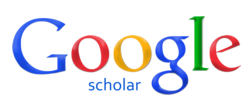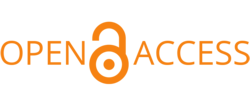Public Notice
The Caucasus Journal of Milton Studies (CJMS) adheres to the Principles of Transparency and Best Practice in Scholarly Publishing as identified by COPE, DOAJ, OASPA, and WAME.
The Committee on Publication Ethics (COPE), the Directory of Open Access Journals (DOAJ), the Open Access Scholarly Publishing Association (OASPA), and the World Association of Medical Editors (WAME) are scholarly organizations that have collaborated to identify principles of transparency and best practice for scholarly publications. This is the fourth version of a work in progress (published 15 September 2022).
The Principles of Transparency and Best Practice in Scholarly Publishing applies to all CJMS content, including special issues and conference proceedings. Where practices deviate from the standards outlined, editors will transparently communicate the procedures that the CJMS follows.
These principles also acknowledge that the CJMS publisher (Milton Society of Georgia-MSG) and editors are responsible for promoting accessibility, diversity, equity, and inclusivity in all aspects of the publication. Editorial decisions will be based on scholarly merit. They will not be affected by the origins of the manuscript, including the nationality, ethnicity, political beliefs, race, gender, or religion of the authors. MSG and CJMS ensure no policies create an exclusionary environment for anyone wanting to engage with the CJMS and will regularly assess their policies for inclusivity.
PRINCIPLES OF TRANSPARENCY
Journal content
1. Name of journal
The journal’s name should:
Be unique and not be one that is easily confused with another journal.
Not mislead potential authors and readers about the journal’s origin, scope, or association with other journals and organizations.
2. Website
Websites should be properly supported and maintained, with particular attention given to security aspects that help protect users from viruses and malware. As a minimum, websites should use https and not http, and all traffic should be redirected through https.
Those responsible for the website should apply web standards and best ethical practices to the website’s content, presentation, and application.
The website should not contain information that might mislead readers or authors.
The website should not copy another journal/publisher’s site, design, or logo.
If any text is copied from another website, an acknowledgement to the source website should be declared.
In addition to the requirements outlined below, the following items should be clearly displayed:
Aims and scope.
The target readership of the journal.
The types of manuscripts the journal will consider for publication (for example, that multiple or redundant publication is not allowed).
Authorship criteria.
ISSNs (separate for print and electronic versions)
3. Publishing schedule
A journal’s publishing frequency should be clearly described, and the journal must keep to its publishing schedule unless there are exceptional circumstances.
4. Archiving
A journal’s plan for electronic backup and long term digital preservation of the journal content, in the event that the journal and/or publisher stops operating, should be clearly indicated. Examples include PMC and those listed in the Keepers Registry.
5. Copyright
The copyright terms for published content should be clearly stated on the website and in the content.
The copyright terms should be separate and distinct from the copyright of the website.
The copyright holder should be named on the full text of all published articles (HTML and PDF).
If the copyright terms are described in a separate form, this should be easy to find on the website and available to all
6. Licensing
Licensing information should be clearly described on the website.
Licensing terms should be indicated on the full text of all published articles (HTML and PDF).
Content designated as Open Access must use an open license.
Licensing policies about the posting of author manuscripts and published articles in third party repositories should be clearly stated.
If Creative Commons licenses are used, then the terms of that license should also link to the correct license on the Creative Commons website.
Journal practices
7. Publication ethics and related editorial policies
A journal should have policies on publication ethics (for example, COPE’s Core Practice guidance).
These should be visible on its website, and should refer to:
Journal’s policies on authorship and contributorship.
How the journal will handle complaints and appeals.
How the journal will handle allegations of research misconduct.
Journal’s policies on conflicts of interest.
Journal’s policies on data sharing and reproducibility.
Journal’s policy on ethical oversight.
Journal’s policy on intellectual property.
Journal’s options for post-publication discussions.
Journal’s policies on corrections and retractions.
Editors and publishers are responsible for ensuring the integrity of the scholarly literature in their journals and should ensure they outline their policies and procedures for handling such issues when they arise. These issues include plagiarism, citation manipulation, and data falsification/fabrication, among others. Neither the journal’s policies nor the statements of its editors should encourage such misconduct, or knowingly allow such misconduct to take place. In the event that a journal’s editors or publisher are made aware of any allegation of research misconduct relating to a submitted or published article in their journal, the editor or publisher should follow COPE’s guidance (or equivalent) in dealing with allegations.
8. Peer review
Peer review is defined as obtaining advice on manuscripts from reviewers/experts in the manuscript’s subject area. Those individuals should not be part of the journal’s editorial team. However, the specific elements of peer review may differ by journal and discipline, so the following should be clearly stated on the website:
Whether or not the content is peer-reviewed.
Who conducts the peer review, for example, external experts or editorial board members.
The type of peer review process(es) used
Any policies related to the peer review procedures, for example:
Use of author recommended reviewers.
Any masking of identities, and if so who is masked and to whom.
Whether or not supplementary material is subjected to peer review.
Whether or not reviews are posted with articles.
Whether or not reviews are signed or anonymous.
How a decision about a manuscript is ultimately made and who is involved.
Any exceptions to the peer review process, such as specific article types that do not undergo peer review.
If an article’s peer review is an exception to the usual policy, the article should state what review it received.
Journals should not guarantee acceptance of initial manuscript submissions. Statements of peer review times should be supported by published timeframes on accepted papers. In the event of delays, authors should be informed of the reason for the delay and given the opportunity to withdraw their manuscript if they wish.
The date of publication should be published with all published research. Dates of submission and acceptance are preferred as well.
9. Access
If any of the online content is not freely accessible to everyone, the method of gaining access (for example, registration, subscription, or pay-per-view fees) should be clearly described. If offline versions (for example, print) are available, this should be clearly described along with any associated charges.
Organization
10. Ownership and management
Information about the ownership and management of a journal should be clearly indicated on the journal’s website.
Organizational names should not be used in a way that could mislead potential authors and editors about the nature of the journal’s owner.
If a journal is affiliated with a society, institution, or sponsor, links to its website(s) should be provided where available.
11. Advisory body
Journals should have editorial boards or other advisory bodies whose members are recognized experts in the subject areas stated in the journal’s aims and scope.
The full names and affiliations of the members should be provided on the journal’s website.
The list should be up to date, and members must agree to serve.
To avoid being associated with predatory or deceptive journals, journals should periodically review their board to ensure it is still relevant and appropriate.
12. Editorial team/contact information
Journals should provide the full names and affiliations of their editors as well as contact information for the editorial office, including a full mailing address on the journal’s website.
Business practice
13. Author fees
If author fees are charged (such as article processing charges, page charges, editorial processing charges, language editing fees, color charges, submission fees, membership fees, or other supplementary charges), then the fees should be clearly stated on the website.
If there are no such fees, this should be clearly stated.
Author fee information should be easy to find and presented as early in the submission process as possible.
If the journal is likely to implement author charges in the future, this should be stated.
If waivers are available for author fees, this information should be stated clearly.
Waiver information should include:
Who is eligible for a waiver.
Which author(s) of the group must be eligible for the waiver to apply.
When and how to apply for a waiver.
Author fees or waiver status should not influence editorial decision-making, and this should be clearly stated.
14. Other revenue
Business models or revenue sources should be clearly stated on the journal’s website.
Examples include author fees (see section 13), subscriptions, sponsorships, and subsidies, advertising (see section 15), reprints, supplements, or special issues.
Business models or revenue sources (for example, reprint income, supplements, special issues, and sponsorships) should not influence editorial decision-making.
15. Advertising
Journals should state whether they accept advertising. If they do, they should state their advertising policy, including:
Which types of advertisements will be considered.
Who makes decisions regarding accepting advertisements.
Whether they are linked to content or reader behavior or are displayed at random.
Advertisements should not be related in any way to editorial decision-making and should be kept separate from published content.
16. Direct marketing
Any direct marketing activities, including solicitation of manuscripts, that are conducted on behalf of the journal should be appropriate, well-targeted, and unobtrusive. Information provided about the publisher or journal should be truthful and not misleading for readers or authors.
COPE Resources
https://publicationethics.org/resources/guidelines/principles-transparency-and-best-practice-scholarly-publishing https://publicationethics.org/resources/guidelines/principles-transparency-and-best-practice-scholarly-publishing
COPE Guidance
https://publicationethics.org/guidance


